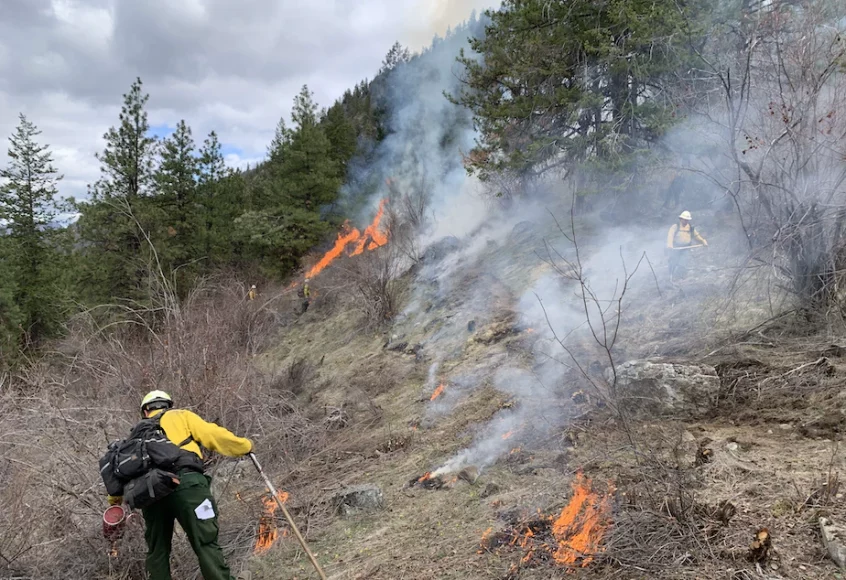The past weekend of wildfires and hazy smoke in Washington state underscores more than ever the importance of forest management and how tools like thinning and prescribed fire are critical to promoting healthy, resilient forests.
Catastrophic forest fires are growing in intensity and frequency due in large part to nearly 100 years of fire suppression policies on forest lands and increasingly hotter, drier summers brought on by climate change. The past several Augusts and September months marred by wildfire smoke and the mounting danger to communities have led to local, state and federal leaders searching for strategies to mitigate the damage large-scale blazes pose to people, wildlife, the environment and property.
There’s a growing body of research that corroborate prescribed fires are an important tool in forest management that lessen the severity of wildfires. Planned burns – which happen during cooler, wetter months under controlled situations – help clear dead plant material, underbrush, shrubs, and diseased, dying, overcrowded and weaker trees that help fuel and spread flames during a fire. The prescribed burns create spacing and play a critical role in reducing fuel loads so forest fires are less intense.

DNR firefighters start a prescribed burn in the Sinlahekin Wildlife Area in March 2022. Photo courtesy of the Washington State Department of Natural Resources.
A recent article in the New York Times examined how foresters and scientists are using high-tech tools during planned fires to help make prescribed burns even more effective. In fact, the intentional burn programs of tomorrow could soon include drone-mounted sensors that measure moisture levels in the underbrush, anemometers to measure wind, lidar for mapping and even prescribed fire simulators to help train burn crews in preparation of future prescribed fires.
Washington State Department of Natural Resources (DNR) offers a web-based assistance tool for forest landowners that includes information on the state’s prescribed fire efforts. DNR describes its Prescribed Fire Program as a “cost-effective tool with a high rate of success for forest restoration and wildfire risk reduction” and a “critical tool for completing objectives” with the state’s long-term forest health plans.
This spring, DNR resumed prescribed fires on state lands after an 18-year hiatus. The state halted the planned fires in response to air quality concerns. But with catastrophic wildfires that have marred the skies with unhealthy smoke and haze in recent years, state officials determined that controlled burns could improve forest health, decrease air pollution cause by forest fires, save lives and prevent property loss long term.
In addition to promoting healthy, resilient forests, wildlife experts say fire plays an important role in a forest ecosystem. Planned burns help improve habitat, increase biodiversity and recycle nutrients that benefit smaller non-game species and larger animals.
Said Commissioner of Public Lands Hilary Franz in a news release earlier this year announcing a collaboration in Okanogan County with state and federal agencies:
“The launch of our prescribed fire program marks a significant step forward in accomplishing our bold goals of restoring the health of Washington’s forests—and we’re bringing this vision to life through proactive collaboration and partnership. Forest health treatments, including selective forest thinning and prescribed burning, are the necessary steps to combat our wildfire and forest health crisis.”
